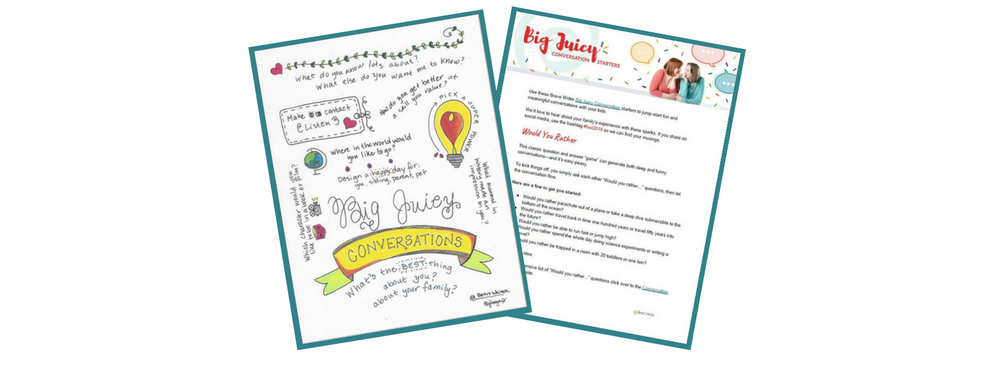Big Juicy Conversations

Charlotte Mason and Ruth Beechik have popularized a practice in homeschooling circles called, "narration." Narration is the notion that students learn more when they are encouraged to express what they've learned in oral language—what they label "narration." Rather than testing a student to discover what the student doesn't know, the fans of narration suggest that children will happily show off what they've learned by talking about it in detail to a willing and interested audience.
Oddly, what followed looks less like happily conveying a store of knowledge and more like a parental requirement to recite in nearly identical terms the information most recently studied, consumed, read, or watched. I call this common homeschool practice: "Narration on command." A parent reads a chapter, and then expects four little cherubs to stand in a line retelling what was just read, one after the other. By child four, someone is bound to say, "Do I have to?" or "She used up all the words I was going to say!"
In principle, narration is a wonderful tool for expressing learning. In schools, it could prove to be revolutionary! Allow kids to talk about what they are learning rather than testing them? Yes! In the home, however, narration can feel forced or canned.
Take advantage of the properties of home—have big juicy conversations! There's no need for a child to stand before you, arms at her side, reciting information. Instead, pour a pair of glasses of lemonade and talk. Ask meaningful questions like:
- "What did you think about that?"
- "I never thought of it that way. Can you tell me more?"
- "I think I see where you're going. What happened next?"
- "I want to catch up to where you are in the story. Can you tell me more about this one part?"
In addition to good questions, you can also contribute! One of the ways kids grow in their capacity to examine and think deeply is to watch you do it! You can't do that if you are sitting silently, on your hands, only listening as the audience. If you have a Big Juicy Conversation, your thoughts and ideas are added to the mix. You might contribute like this: "When I listened to this story, it reminded me of...." You can go further, "I was rooting for this character. I felt guilty for rooting for a bad guy. I realized that some stories make you feel sorry for the bad guy. Do you know what I mean? Did you feel sorry for the bad guy too? Why do you think the writers wanted us to sympathize with the mean character?"
By examining a story together, exchanging ideas, following the natural flow of conversation (while augmenting it with adult understanding), you invite your children into an examination that takes them further than simple retelling. Narration has a place—pictorial narration, retelling, summarizing, sequencing. It is possible to create narrations with modeling clay or in dress up clothes or building models with Legos. It is also possible to foster wonderful conversational exchanges with your kids that will take them further in their powers of reflection and analysis, all while building a close relationship with you, the parent!

For Julie's hand-lettered Big, Juicy Conversation Tips plus a 2-page Conversation Starters guide sign up here.
Listen to the Big Juicy Conversations Podcast
